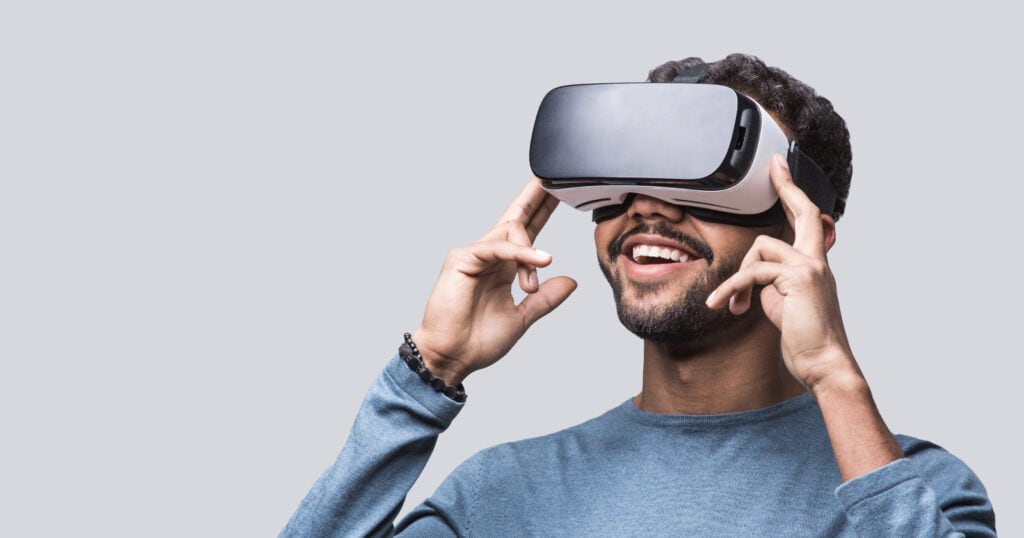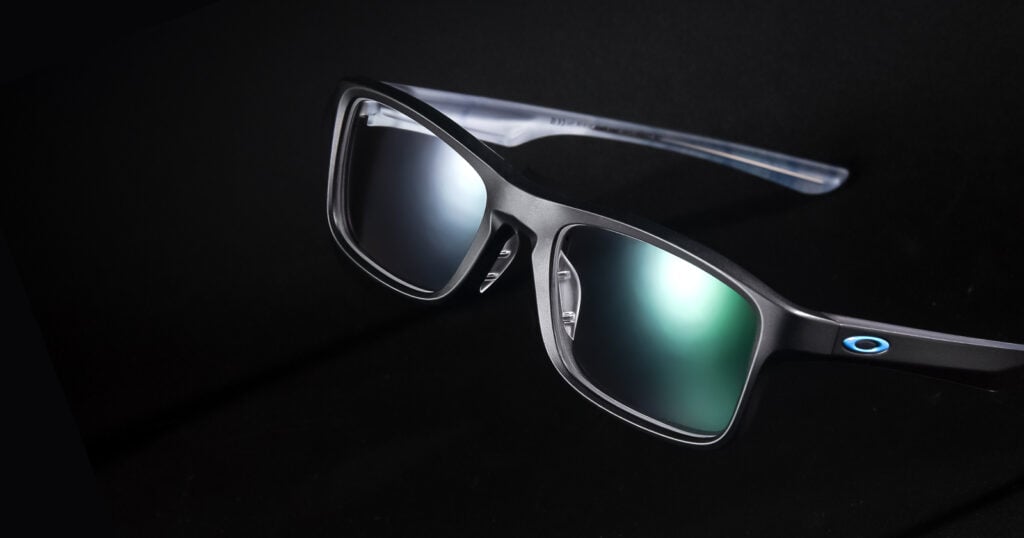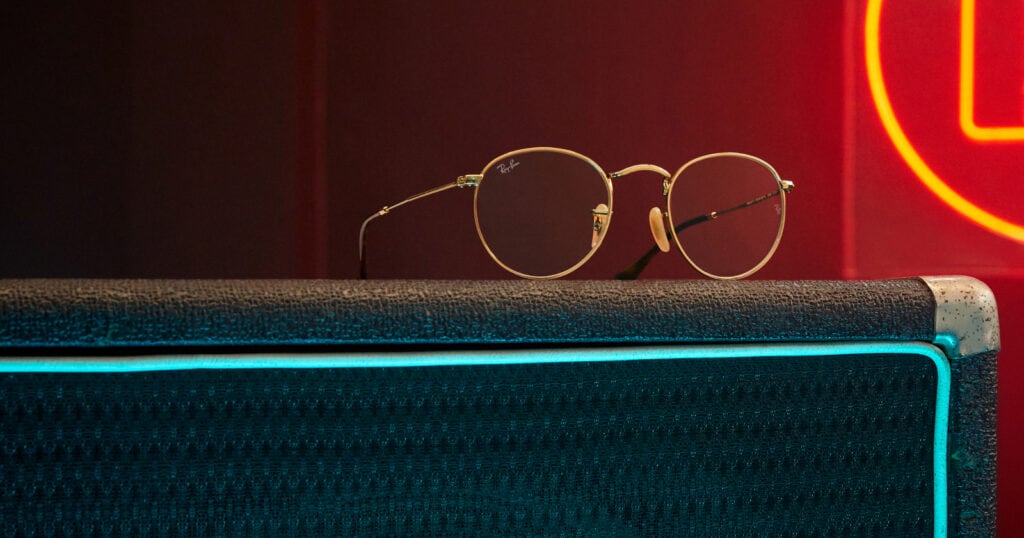Can You Wear Glasses with VR?
Yes, you can wear your glasses under a virtual reality (VR) headset. It may be uncomfortable if you wear a larger frame size, or if your headset isn’t properly fitted. But fear not; there are several options to consider when it comes to pairing glasses and VR.
Some people choose a VR headset that fully fits over their regular eyewear. Some focus on adjusting the headset for a custom, comfortable fit. Others opt for smaller glasses frames or may even ditch their glasses altogether if they don’t rely on vision correction for close distances.
In any case, you don’t have to sacrifice your VR gaming experience because you wear glasses.
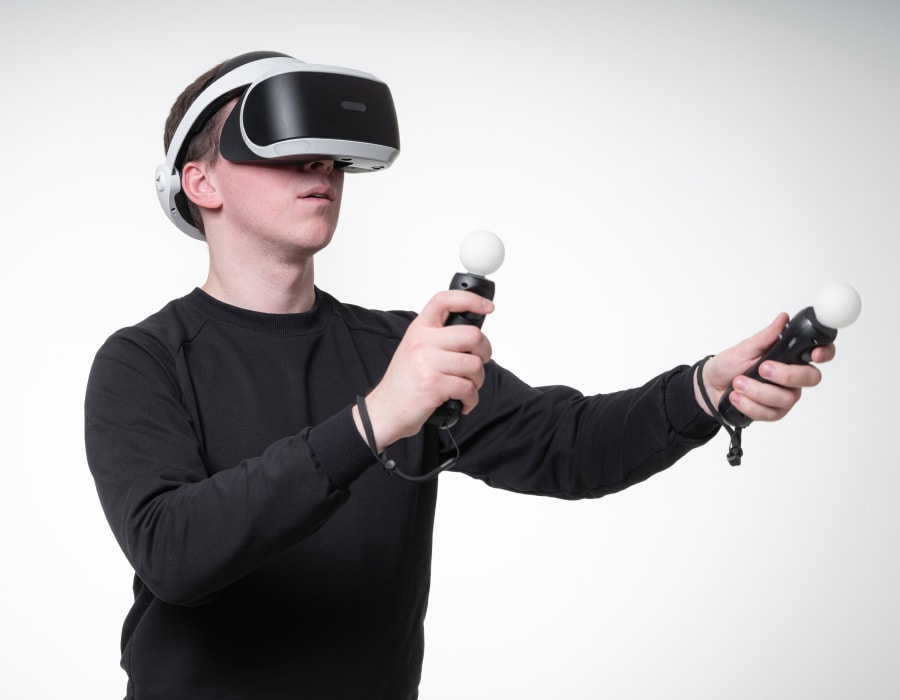
Compatibility of VR Headsets with Glasses
Some VR headsets are more compatible than others if you wear glasses. What makes them compatible depends on their overall comfort, space, clarity, and ease of use. It may take some trial and error to discover your personal favorite, but many VR users seem to be in agreement when it comes to the worst and best VR for glasses.
These VR headsets are said to be most compatible with glasses:
- PlayStation VR models (PSVR, PSVR2, PSVR4)
- Oculus Rift S
- Meta Quest 2
- HP Reverb Line
- Varjo
These VR headsets are considered least compatible with glasses:
- Original HTC Vibe (the deluxe audio strap is also reported to cause discomfort)
- Oculus CV1 Rift (some users report that wearing glasses with Oculus Rift can cause pinching)
Remember, different challenges exist for everyone. Your experience with some of these VR headsets may be better or worse than what others have gone through.
Adjusting the Headset for Comfort
You can make your VR headset with glasses feel comfortable by adjusting it to a custom fit. There is a right and wrong way to go about this adjustment, though — it all depends on the design of the headset you’re using.
To secure a proper fit without discomfort, we recommend taking the following steps to adjust your VR headset to fit over your glasses. To avoid lens scratches, consider using a glasses spacer as well.
For best results with a standard headset, be sure to follow steps in this order:
- Start by wearing your glasses.
- Pick your headset up and place the front part over your glasses (the same way you would put on swimming goggles).
- Secure the rear portion of the headset on the back of your head. Tighten the straps until they feel snug.
- Move your glasses forward or side to side as needed for a roomier, more comfortable fit under the headset.
- Ensure your ears and head feel snug but not squeezed by the headset. This can cause discomfort and interrupt your game.
If you have a VR headset with a halo or headband (like the Oculus Rift S or PSVR), it may be easier to place your headset on in the opposite way:
- Start by wearing your glasses.
- Pick your headset up and place it over your head (the same way you would put on a hat).
- Slide or flip the headset over your glasses.
- Adjust the headset as needed to fit over your glasses.
- Ensure your ears and head feel snug but not squeezed by the headset. This can cause discomfort and interrupt your game.
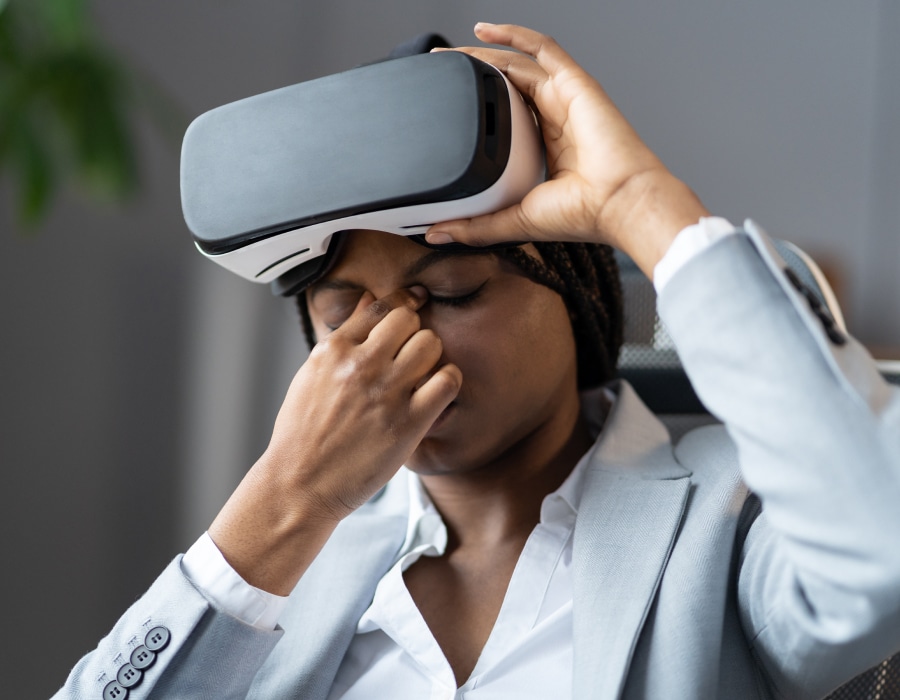
Tips on How to Wear Glasses with VR Headsets
It may take some time to adjust to wearing your glasses under your VR headset, but once you get the hang of it, you’ll be on top of your game with every use. Here are some tips for using a VR headset with spectacles:
- Try a smaller frame style to fit more easily under your headset. Experts recommend frames no wider than 142 millimeters and no taller than 50 millimeters.
- Look for a larger, roomier VR headset to fit more easily over your glasses.
- Use a glasses spacer to allow more room between your glasses and the headset lenses and prevent scratches on both. The Oculus Quest 2 glasses spacer comes built-in. Several other headsets also feature built-in glasses spacers.
- Don’t try to force your glasses and headset to fit together. This can cause discomfort, extra wear and tear, and possible damage to both the headset and your glasses.
- Buy a cushioned faceplate for your headset. This can improve your comfort and alleviate pressure on your face so you don’t have red marks after playing.
- Keep your eyeglass lenses clean. Smudges and fingerprints can take away from your visual clarity as you play.
- Keep your headset clean too. You can work up a sweat in more action-packed games, and if left, bacteria can spread.
If sizing is still a challenge, talk to your optician about the best glasses for VR headsets. You may be able to bring your headset in to try on with different frames until you find your preferred fit.
Common Issues and Solutions
Aside from achieving the right comfort level, there are a few things to be aware of when using your headset while wearing eyeglasses. Many users report issues such as:
- Eye strain
- Motion sickness or dizziness
- Dry eyes
- Headaches
- Foggy lenses due to perspiration
- Vision alignment issues between your glasses and the headset lens
Everyone’s symptoms are different, and the solution for each can vary. Talk to your eye doctor about managing these problems in a way that is best for you. They may recommend a VR-specific vision prescription to address some of the issues.
You also run the risk of scratching your headset or eyeglass lenses if there’s not enough room between the two. Scratching the headset lenses can interrupt your visual clarity and be quite distracting when the headset is in use. Lens scratches — on your headset or glasses — may also lead to damage that can be expensive to fix. We recommend using a glasses spacer to prevent these scratches from happening.
Benefits of Using VR with Glasses
There are some perks of using VR with your eyeglasses. Wearing your prescription lenses can improve your visual clarity in the virtual world.
You may also want to try blue light glasses. Some people who use blue-violet light* filtering lenses experience increased visual comfort and/or relief from eye strain symptoms. You should also take frequent screen breaks and use artificial tears to keep your eyes rested and lubricated.
Additionally, wearing your glasses can save you money. By not paying for new contact lenses or prescription lens inserts for your VR headset, you keep more cash in your pocket. Just keep in mind that there are some disadvantages that come with glasses as well.
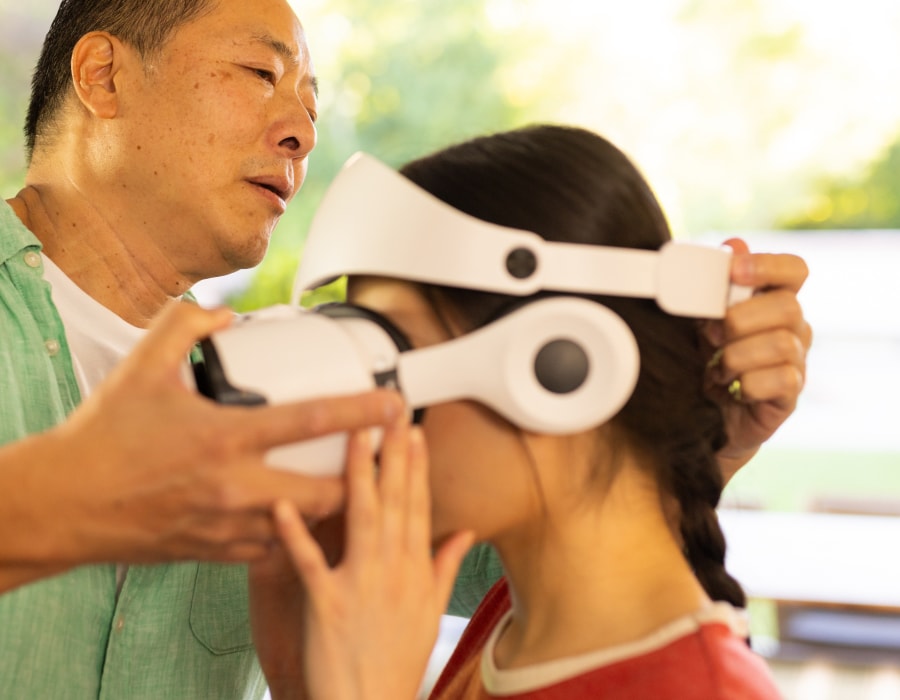
Alternative Solutions
If you’re having trouble adjusting to wearing your glasses under your headset, here are some alternative solutions to consider:
- Wear contact lenses instead of glasses – You can avoid the hassle of adjusting your frames and headset in the first place if you don’t have glasses on. But this may be a struggle if you don’t like or wear contacts.
- Skip wearing your glasses – If you don’t need vision correction to see things up close (say, through a VR headset), you might find it easier to put your glasses in their case while you play. We don’t recommend doing this if it interferes with your vision, gives you a headache, or feels uncomfortable. Consult your eye doctor before trying this method.
- Try prescription lens inserts – That’s right, you can get lens inserts that set right into your headset! This option completely eliminates the need for adjusting your frames and headset, and it takes the hassle out of wearing contacts to play. On the downside, lens inserts can be expensive and may be hard to fit.
Don’t be afraid to ask your eye care professional about your options and any concerns you have about wearing glasses with your headset. It’s always a good idea to get expert insight if you have questions about your vision or eye health.
Glasses and VR
Glasses and VR headsets may sometimes be hard to pair up, but there are several things you can do to increase your comfort as you enjoy your favorite VR entertainment. Whether you opt for glasses, contacts, or prescription lens inserts, having visual clarity and comfort will make it easier to enjoy every part of your gaming.
Technology continues to evolve in the world of VR, so be sure to share your tips and experiences with your fellow glasses-wearing gamers. It makes it much more fun for everyone.
*Disclaimer: Blue-violet light is between 400-455nm as stated by ISO TR20772-2018.
